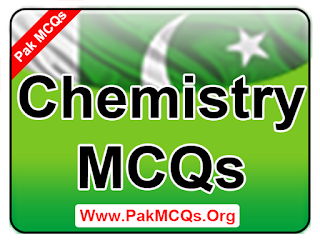A. Rate of reaction
B. Rate of equilibrium
C. Backward rate
D. Forward rate
162. The
reaction which do not proceed to completion and after passage of some time
contain both reactants and products, are called.?
A. Reversible reaction
B. Incomplete reaction
C. Complete reaction
D. Non-reversible reaction
163. In a
chemical equation, a double arrow indicates.?
A. Reversible reaction
B. Equilibrium
C. Complete reaction
D. None of above
164. As long
as temperature remains constant and concentration of water vapours do not
change in a closed system it indicates a.?
A. Reversible process
B. Dynamic equilibrium
C. Reversible equilibrium
D. None of above
165. The
stage at which the reaction appears to stop under given conditions is called.?
A. Equilibrium stage
B. Final stage
C. Completion stage
D. Initial stage
166. Under
the given set of conditions of temperature, pressure and concentration the
point at which a reaction seems to stop is always.?
A. Different
B. Changes
C. Readable
D. Same
167. Under a
given set of conditions at which any reaction seems to stop has a quantitative
relation with reactant and product.?
A. Nature
B. Type
C. Concentration
D. None of above
168. Water
placed in closed container at constant temperature has equilibrium of the type.?
A. Dynamic
B. Chemical
C. Static
D. Physical
169. Which
state of chemical equilibrium is that tat which all types of motions.?
A. Are available
B. Do not cease
C. Not available
D. None of Them
171. Deflecting
of cathode rays towards positively charged plats indicate it is
A. Neutral
B. Negatively charged
C. Electromagnetic wave
D. Positively charged



















0 comments:
Post a Comment
Hello!
Although Every Comment is Appreciated. Feedback, Suggestions, Any Question Comment Below Be Carefully & Feel Free. Admin Will Give You Answer of Your Question in Just Within 12 Hours.